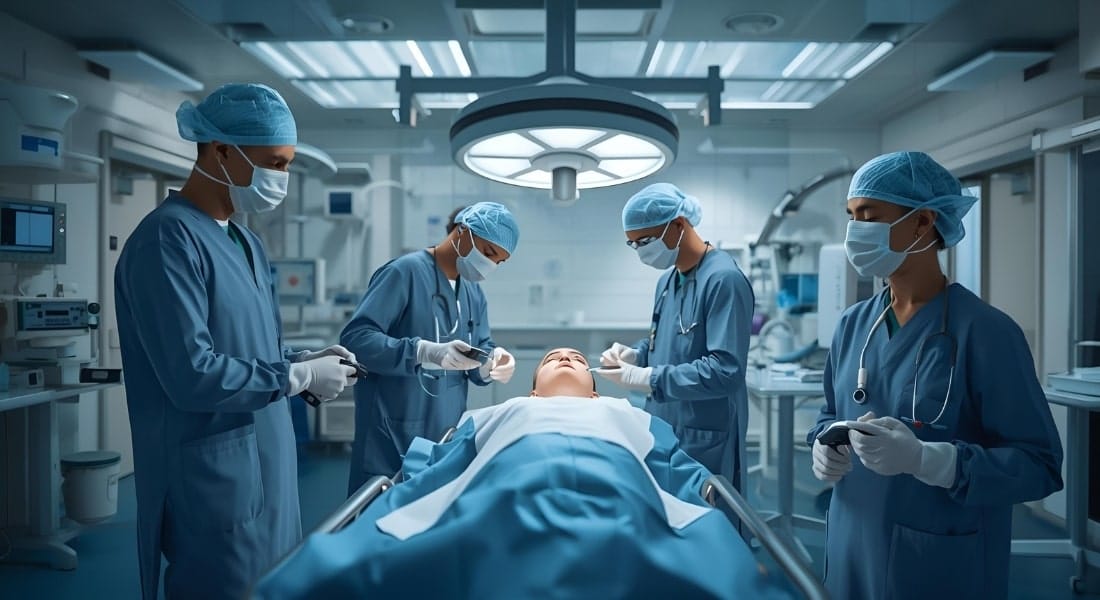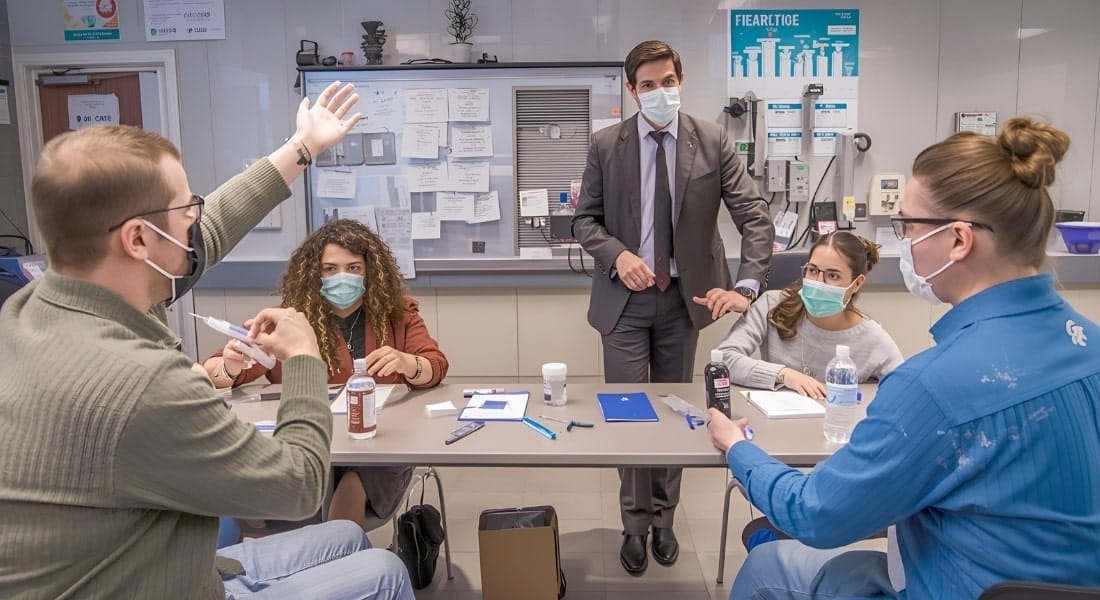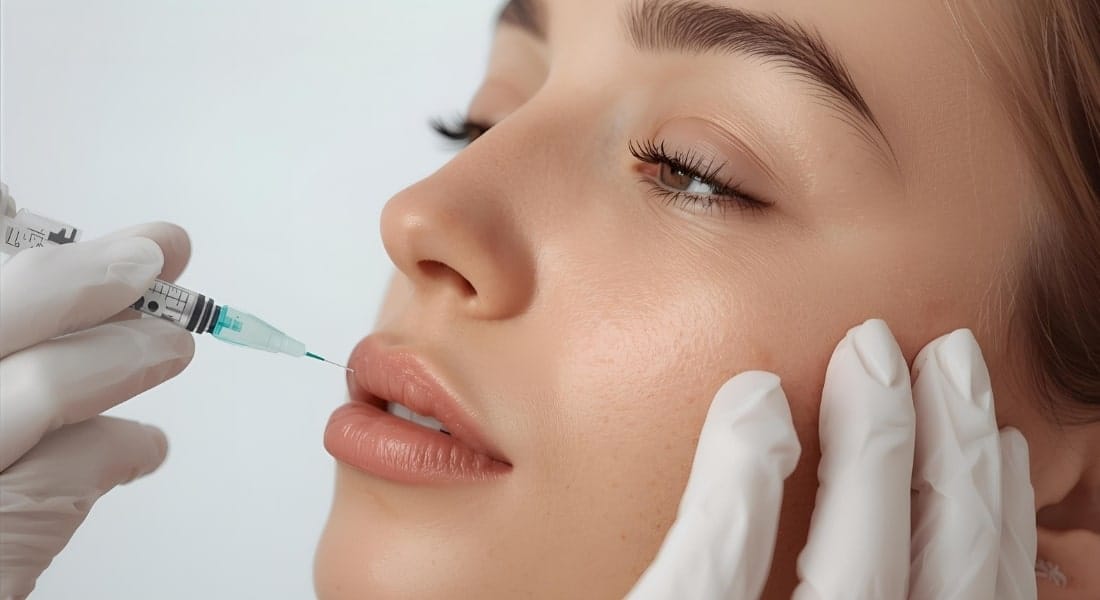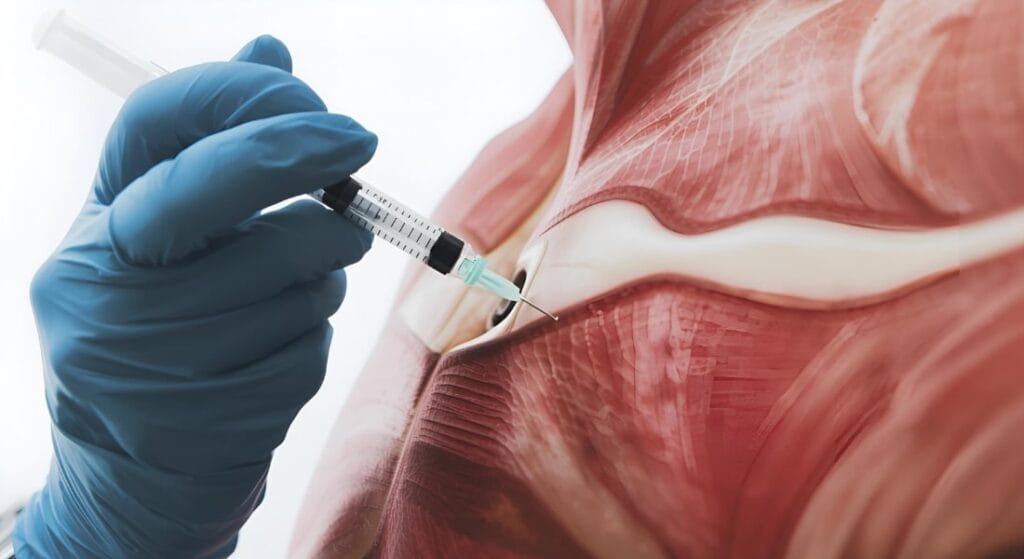In the rapidly expanding field of medical aesthetics, injections have become a cornerstone of non-surgical rejuvenation and cosmetic enhancement. From smoothing fine lines with botulinum toxin to restoring lost volume with dermal fillers and achieving a subtle lift with PDO threads, these procedures offer transformative results with minimal downtime. However, for every successful outcome, there is a foundation built on precision, expertise, and an unwavering respect for human anatomy. The act of injecting is not merely about product placement; it is a delicate dance between art and science, where a profound understanding of facial anatomy is the non-negotiable key to ensuring safe injecting practices.
For aesthetic professionals, dermatologists, plastic surgeons, and clinic owners, the stakes are incredibly high. The risks of improper injection—including vascular occlusion, nerve injury, asymmetry, and even blindness—are severe and carry significant medico-legal implications. Patient safety is, and must always be, the highest priority. A reputation built on trust and clinical excellence is fragile and can be shattered by a single adverse event. At Aakaar Medical Technologies Ltd, we understand these challenges. As a trusted B2B medical injectables supplier India, we are committed to not only providing state-of-the-art injectables and contouring products but also serving as an educational partner, emphasizing that the right products, combined with anatomical expertise, are the only path to predictable and safe aesthetic outcomes.
Understanding the Role of Anatomy in Injection Safety
For any aesthetic injection, whether it’s a filler, a toxin, or a thread, the practitioner must possess an intimate knowledge of the underlying vascular, muscular, and nervous structures. This deep anatomical understanding is what separates a skilled practitioner from a novice and is the single most critical factor in mitigating risk and ensuring the desired aesthetic result.
The Vascular System: Navigating a High-Risk Territory
The face and neck are a roadmap of arteries and veins, many of which lie in superficial planes and are at risk of injury during an injection. Accidental injection of a filler or other substance into an artery is one of the most feared complications, known as vascular occlusion. If left untreated, this can lead to tissue necrosis (tissue death) and, in some cases, catastrophic events like blindness or stroke.
- Glabellar Region: This area between the eyebrows is a high-risk zone due to its proximity to the supraorbital and supratrochlear arteries, which are branches of the ophthalmic artery. Occlusion here can lead to blindness.
- Nasolabial Folds: The angular artery runs along the side of the nose and can be vulnerable during injections in the nasolabial fold or tear trough.
- Temporal Region: The superficial temporal artery is a major vessel that must be avoided when injecting in the temple area for volume restoration.
A professional’s knowledge of these danger zones is not just theoretical; it dictates the choice of injection technique, needle gauge, and even the type of product used.
The Muscular System: The Canvas of Expression
When administering botulinum toxin, the goal is to precisely relax specific muscles to reduce the appearance of wrinkles, while leaving surrounding muscles unaffected to maintain natural facial expressions. This requires a detailed understanding of muscle origins, insertions, and their dynamic interplay. For example, injecting botulinum toxin into the frontalis muscle (forehead) requires careful dosing and placement to avoid an unnatural “frozen” look or, worse, eyebrow ptosis (drooping). The treatment of “bunny lines” on the nose requires precise injection into the nasalis muscle to avoid the nearby levator labii superioris alaeque nasi muscle, which could affect the smile. The ability to perform botulinum toxin injection best practices is directly proportional to a practitioner’s knowledge of muscle anatomy.
The Nervous System: The Blueprint for Sensation and Movement

The facial nerve and its five main branches (temporal, zygomatic, buccal, marginal mandibular, and cervical) are responsible for all facial movements and expressions. Nerve damage from a misplaced injection can lead to temporary or permanent paralysis, asymmetry, or loss of sensation. For instance, an injection into the lateral platysma muscle to improve jawline definition requires a precise understanding of the location of the marginal mandibular nerve to avoid weakening the depressor anguli oris muscle, which could cause an asymmetrical smile. A thorough understanding of facial anatomy in aesthetics is the practitioner’s best defense against such adverse outcomes.
Consequences of Ignoring Anatomy in Injecting Practices
For clinics and hospitals, the consequences of poor injection practices extend far beyond an individual patient’s well-being. A single anatomical error can trigger a domino effect of negative repercussions.
- Vascular Occlusion and Tissue Necrosis: This is a medical emergency. A practitioner must immediately recognize the signs (blanching, severe pain, mottled skin) and have a protocol for emergency treatment (hyaluronidase injection for hyaluronic acid fillers). Failure to act quickly can result in irreversible tissue necrosis and permanent scarring, leading to a patient lawsuit and a catastrophic blow to the clinic’s reputation.
- Blindness: Though rare, accidental intravascular injection of filler into the vessels that supply the eye can lead to irreversible blindness. This devastating outcome is a direct result of a lack of knowledge of the ophthalmic artery and its branches.
- Nerve Paralysis and Asymmetry: A temporary or permanent facial paralysis can be a public and painful reminder of an anatomical oversight. These results not only cause patient distress but also lead to a loss of business and a severe medico-legal challenge.
- Reputational Damage: In today’s interconnected world, a single negative review or social media post about a botched procedure can go viral, causing irreparable damage to a clinic’s brand. For a B2B medical injectables supplier India, an association with a clinic that has a history of patient complications can also be detrimental. This is why Aakaar Medical Technologies Ltd is so committed to partnering with professionals who prioritize aesthetic injection safety.
Safe Injection Techniques & Best Practices
Anatomy is the theory; safe injection techniques are the practice. They are the application of anatomical knowledge in the clinical setting to ensure maximum efficacy and minimum risk.
- Injection Depth & Cannulas: Practitioners must know the precise depth for each product. Dermal fillers for deep volume restoration must be placed in the supraperiosteal or deep subcutaneous plane, while fine line fillers are injected superficially. The use of a blunt-tipped cannula instead of a sharp needle is a modern dermal filler injection safety technique that minimizes the risk of vascular puncture, as cannulas tend to push vessels aside rather than pierce them.
- Aspiration: Aspiration involves pulling back on the syringe plunger for a few seconds before injecting to check for blood flashback. While not a foolproof method, it can serve as a valuable indicator that the needle tip is in a vessel.
- Slow Injection Rate: Injecting slowly and with minimal pressure allows the practitioner to monitor the tissue for signs of blanching or vascular compromise and to stop immediately if a problem is detected.
- Anatomical Mapping: Professionals should mentally or physically map the injection site.
- Lips: The superior labial artery and inferior labial artery must be avoided. Small boluses injected slowly are key.
- Cheeks: When addressing mid-face volume, a practitioner must be mindful of the facial artery and vein.
- Jawline: The facial artery crosses the jawline, and its location can vary. Careful palpation is required.
- Forehead & Glabella: As mentioned, these areas require a thorough understanding of the vascular network to prevent devastating complications.
Adhering to globally recognized guidelines from organizations like ISAPS and the WHO is not optional; it’s a professional mandate. A commitment to these safe injecting practices ensures not only patient well-being but also the long-term success and credibility of a clinic.
Medical Devices & Injectables Supporting Safe Practices
The practitioner’s skill is paramount, but it is ultimately the quality of the tools and injectables and contouring products they use that makes the outcome possible. Aakaar Medical Technologies Ltd offers a comprehensive portfolio designed to support practitioners in their commitment to anatomical precision and safety.

Dermal Fillers for Safe Volume & Contour
Our Saypha range of hyaluronic acid dermal fillers is engineered for safety, efficacy, and ease of use. Products like Saypha Volume Plus with Lidocaine and Saypha Volume with Lidocaine provide the ideal viscosity for deep volume restoration, while their integrated lidocaine ensures patient comfort. For superficial fine lines and subtle enhancements, Saypha Filler with Lidocaine is formulated to integrate smoothly with the tissue. For skin quality and hydration, Saypha Rich is a perfect choice, ensuring a predictable and safe outcome when injected in the correct dermal layer.
PDO Threads for Safe Lifting & Collagen Induction
PDO (Polydioxanone) threads offer a safe alternative to surgical facelifts, providing a subtle lift and stimulating collagen. The importance of anatomy in injections is magnified here due to the need to place threads in specific subcutaneous planes to achieve a secure hold without affecting nerves or vessels. Our range of threads is designed with this precision in mind.
- Aqulift COG Master Gear Threads offer exceptional lifting power with their advanced design.
- Aqulift COG Threads I & II and Aqulift Double Screw Threads are tailored for various lifting and volumizing needs, requiring a practitioner to have a solid understanding of the SMAS (Superficial Musculoaponeurotic System) layer and safe facial vectors.
- Aqulift Mono Threads and the revolutionary TESS Scaffold are used to create a strong collagen framework, promoting skin tightening and rejuvenation while respecting the delicate subcutaneous anatomy. Our products are the preferred choice for those practicing safe filler and thread lifting techniques.
Botulinum Toxin for Precise Wrinkle Relaxation
SIAX – Botulinum Toxin is a powerful tool for wrinkle relaxation. Its precise dosing and predictable spread allow for accurate muscle targeting, but its safe application is entirely dependent on the practitioner’s knowledge of facial musculature.
Skin Quality & Biorevitalisation
For skin quality enhancement, products like etrelume 01 | 02 | 03 and etreluxe Nucleotide are formulated to provide deep hydration and skin regeneration. These are professional-grade solutions that, when injected correctly, help improve skin texture and elasticity.
Aakaar Medical Technologies Ltd is more than a B2B medical injectables supplier India. We understand that our products are only as good as the hands that use them. We are committed to providing the market with the safest, most effective, and highest-quality products to empower practitioners to perform their jobs with confidence and precision.
Training & Education in Safe Injection Practices
The journey to expertise is continuous. Even the most experienced practitioners must commit to lifelong learning to stay current with new techniques, product innovations, and anatomical research. For clinics and training institutes, this means prioritizing anatomical education and hands-on training.

- Hands-on Cadaver Courses: These are the gold standard for anatomical training, allowing practitioners to explore the layered anatomy of the face and gain a real-world perspective on the location of critical structures.
- Clinical Workshops: Reputable suppliers like Aakaar Medical Technologies Ltd often partner with key opinion leaders to host workshops focusing on aesthetic injection safety, product-specific techniques, and complication management.
Our injectables and contouring products are designed for professional use only, underscoring our commitment to ethical practice. We actively support our clients by providing educational resources and training programs to ensure that every product is used to its full potential, safely and effectively.
Future of Safe Injectables & Anatomy-Driven Aesthetics
The future of medical aesthetics is being shaped by an increasing focus on patient safety, driven by both practitioner demand and global regulatory bodies.
- Technological Innovations: The development of blunt-tipped cannulas, which minimize the risk of vascular injury, is a major advancement. The rise of sophisticated products like TESS Scaffold also points to a future where products work in harmony with the body’s natural regenerative processes, reducing the need for aggressive techniques.
- Regulatory Scrutiny: Regulatory bodies are increasingly scrutinizing the safety of aesthetic products and the qualifications of those who administer them. This increased oversight is a positive step that will help weed out unqualified practitioners and ensure that only high-quality products are used.
Aakaar Medical Technologies Ltd is proud to be a forward-looking company in India’s aesthetic industry. We invest in research and development to bring the safest and most innovative injectables and contouring products to the market, helping to raise the bar for safety and efficacy in the region. Our goal is to be a partner in a future where safe and effective aesthetic outcomes are the norm, not the exception.
Frequently Asked Questions (FAQ)
Q1: What is vascular occlusion, and why is it a primary concern in aesthetic injecting?
Vascular occlusion is a medical emergency that occurs when a blood vessel is blocked, often by an accidental injection of filler. This blockage cuts off blood supply to the surrounding tissue, which can lead to complications such as tissue necrosis (tissue death), severe scarring, and, in rare but serious cases, blindness or stroke. Understanding vascular anatomy and using proper injection techniques are essential to prevent this.
Q2: What is the main difference between using a needle vs. a cannula for dermal fillers?
A needle is sharp-tipped and can easily pierce through tissue, including blood vessels. This makes it ideal for precise, small-volume injections but carries a higher risk of bruising and vascular injury. A cannula, by contrast, has a blunt, flexible tip. It is designed to navigate through tissue planes, pushing vessels and nerves aside rather than piercing them. While a cannula still requires a small entry point made by a needle, it is generally considered a safer option for treating larger, more delicate areas like the cheeks, temples, or nasolabial folds, significantly reducing the risk of vascular occlusion.
Q3: Which are the key anatomical “danger zones” to be aware of during facial injections?
Several areas on the face have a high concentration of critical arteries and nerves, making them high-risk zones. The most notable include:
- The Glabella (between the eyebrows): High risk of blindness due to the proximity of arteries connected to the ophthalmic artery.
- The Nasolabial Folds and Nose: The angular artery and dorsal nasal artery are at risk here, with potential complications including tissue necrosis and vision loss.
- The Temporal Region: The superficial temporal artery is located here and must be avoided during injections for volume restoration.
- The Lips: The superior and inferior labial arteries must be carefully mapped and avoided to prevent vascular compromise.
Q4: How does a practitioner’s understanding of anatomy impact patient outcomes?
A deep understanding of anatomy allows a practitioner to precisely target the correct tissue plane for a specific injectable product. It ensures that dermal fillers are placed at the right depth for longevity and a natural look, that botulinum toxin is injected into the correct muscle to achieve the desired effect without causing asymmetry, and that threads are safely anchored for an optimal lift. This precision minimizes adverse events, maximizes results, and builds patient confidence.
Q5: What role does technology play in supporting safe injecting practices?
Modern medical technology, such as blunt-tipped cannulas, safety-engineered syringes, and high-quality, sterile products, significantly enhances safety. Additionally, the emerging use of high-frequency ultrasound for aesthetic injections is a major advancement. Ultrasound allows practitioners to visualize blood vessels and other critical structures in real-time before or during the procedure, enabling them to map a safe injection path and further reduce the risk of complications.
Q6: Why should clinics and hospitals prioritize high-quality injectables from a trusted supplier?
The quality and rheology of an injectable product directly influence its behavior and safety in the tissue. Reputable suppliers like Aakaar Medical Technologies Ltd provide products that are manufactured under strict quality controls to ensure consistency, purity, and predictability. Using clinically tested, high-quality products, such as the Saypha filler range or our SIAX botulinum toxin, reduces the risk of allergic reactions and other complications, supporting the practitioner’s expertise and ensuring superior, safe outcomes.
Conclusion: The Foundation of Safe and Successful Aesthetics

The aesthetic injector is both an artist and a physician. While the art lies in achieving a beautiful and harmonious result, the science—and the responsibility—lies in mastering anatomy. The importance of anatomy in injections cannot be overstated; it is the fundamental knowledge that protects patients from harm, minimizes complications, and builds a foundation of trust and professional credibility. For clinics and practitioners, prioritizing safe injecting practices is the single most important investment they can make in their business.
At Aakaar Medical Technologies Ltd, we are more than a supplier; we are your partner in patient safety and clinical excellence. Our comprehensive portfolio of injectables and contouring products, including our advanced fillers, botulinum toxin, and threads, is designed with the highest standards of safety and efficacy in mind. By choosing Aakaar, you are choosing a partner dedicated to supporting your expertise and helping you deliver anatomically correct, safe, and beautiful outcomes.

